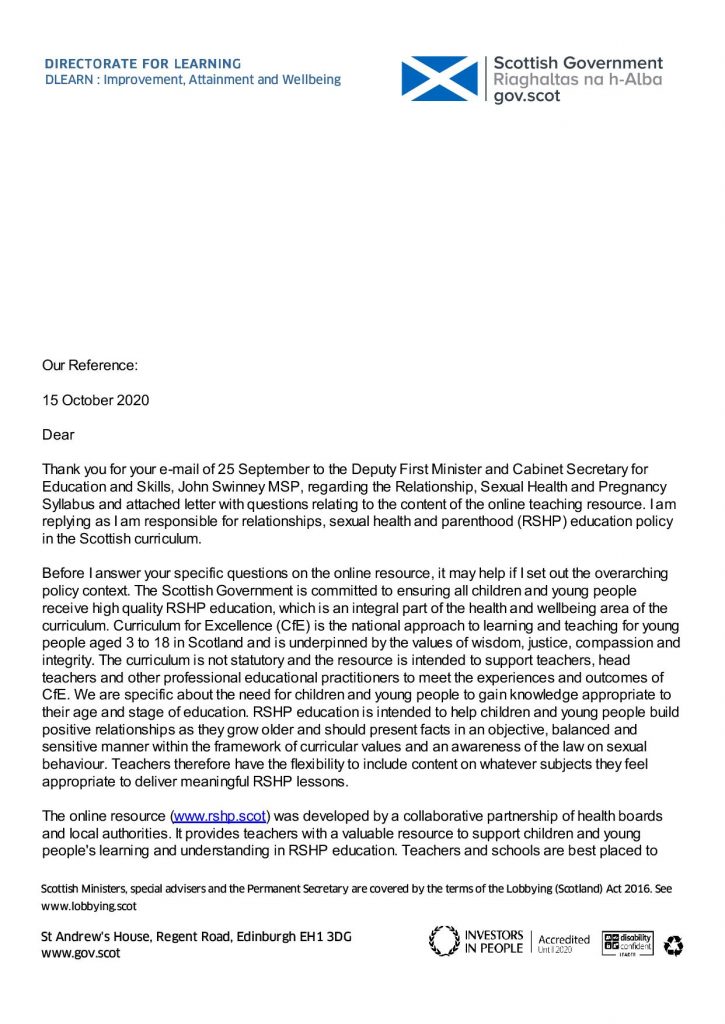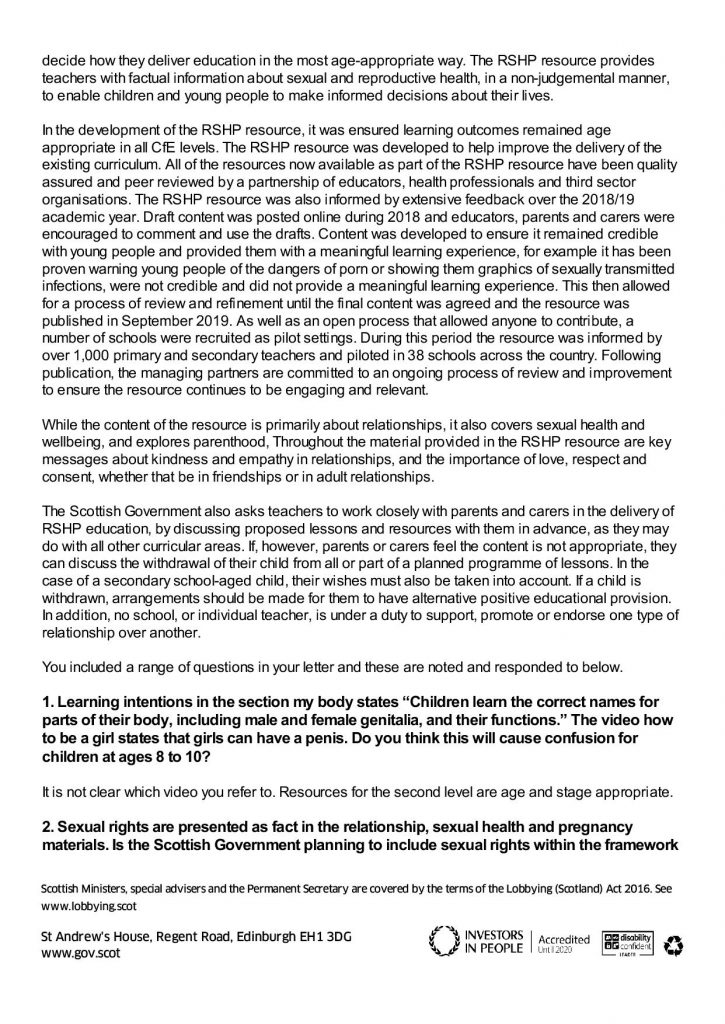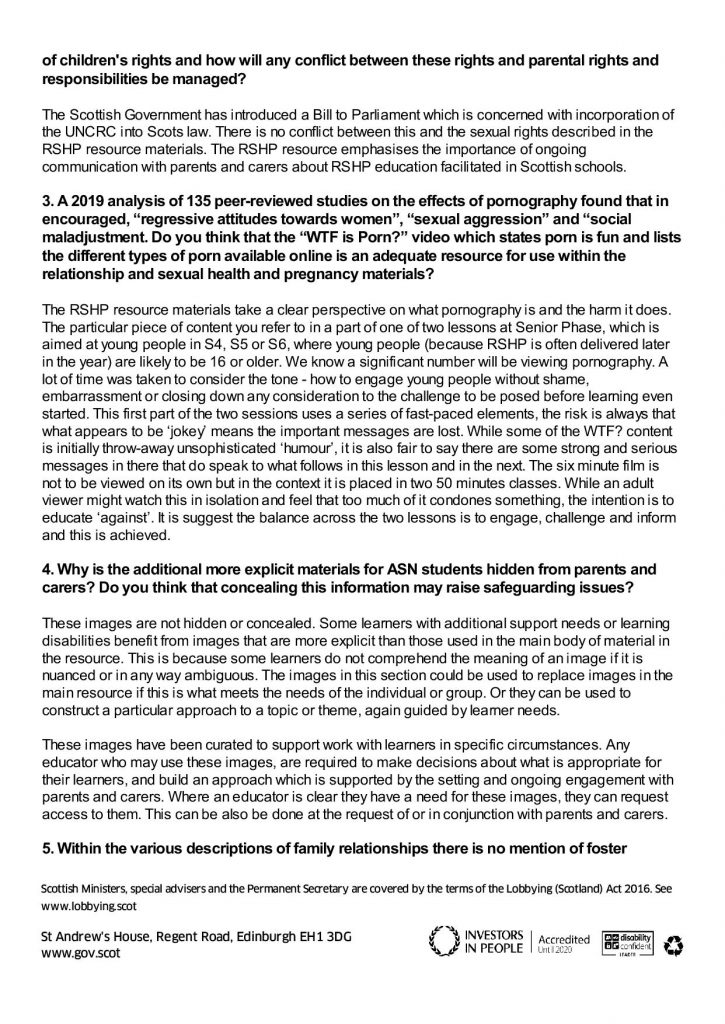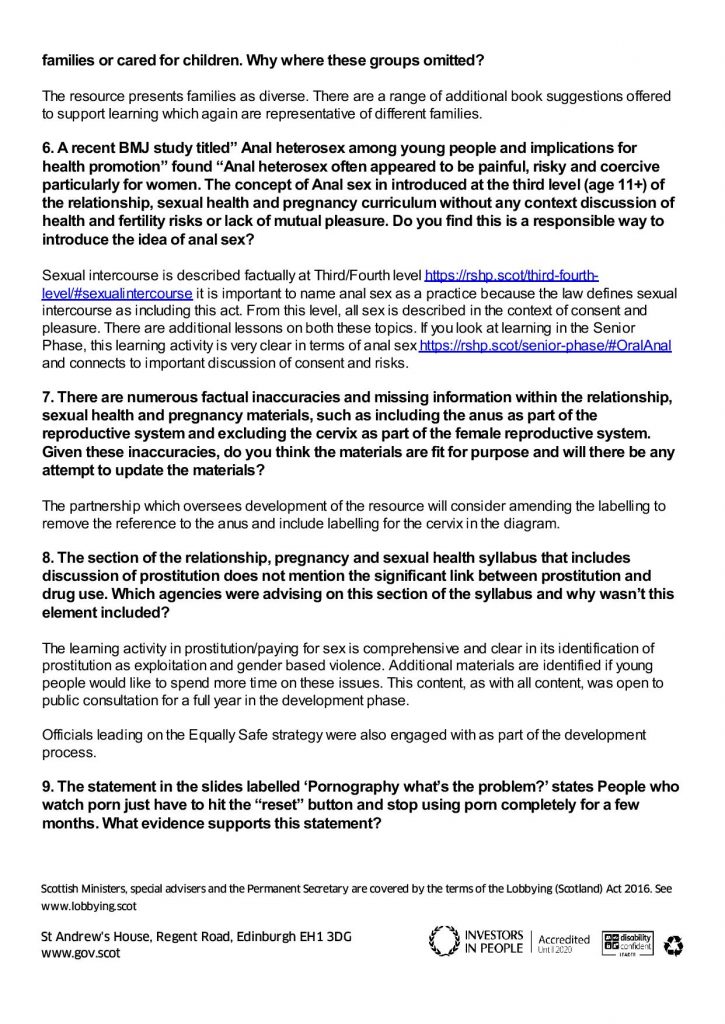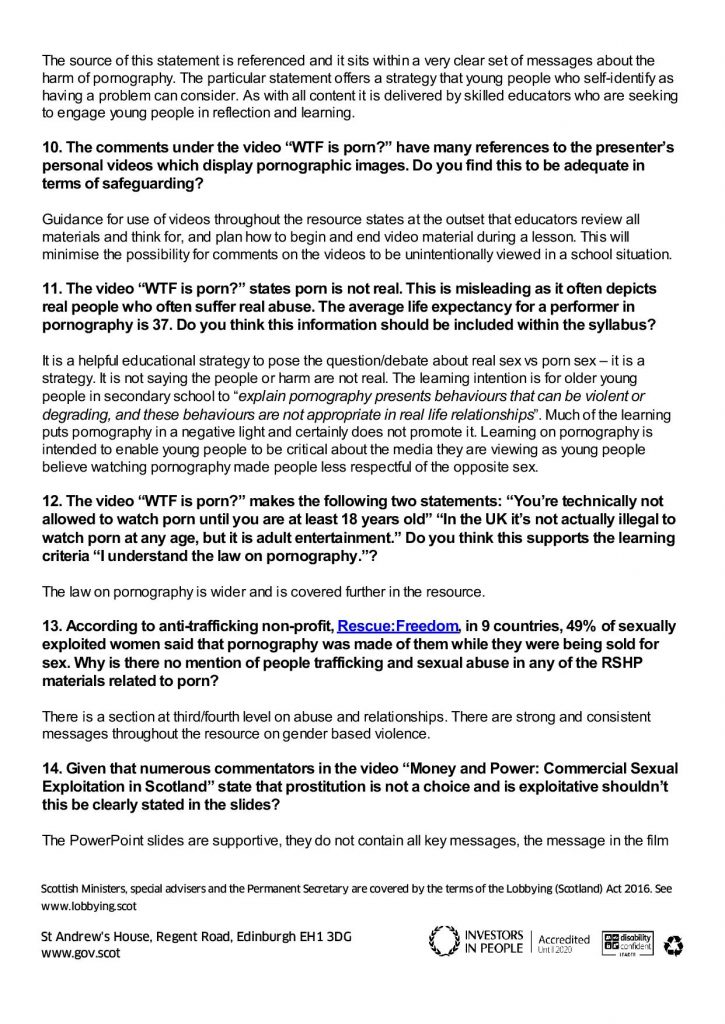RSHP Education
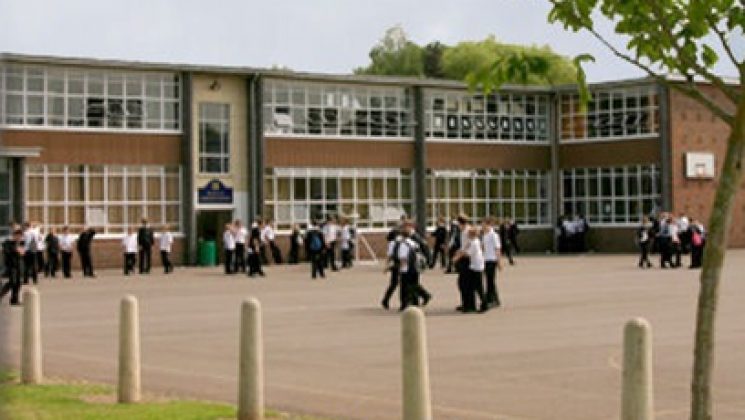
The national resource for relationships, sexual health and parenthood (RSHP) education for children and young people has changed quite considerably since it first came online at rshp.com, when the Scotsman reported on parents concerns about 5 year-olds being told they could decide whether to be a boy or a girl (see our earlier blog post).
This aspect, along with several others, has thankfully now been removed, and we welcome the improvements. However, there are still considerable concerns over the content.
Mr Ben (on Twitter @crit_gen) sent us the letter that she wrote to John Swinney, Cabinet Secretary for Education, outlining the main issues. We have reproduced it here with her permission to help other parents write their own letters – Mr Swinney can be emailed at DFMCSE@gov.scot
NB: This info is now out of date. As of Sept 2023 Jenny Gilruth is the Cabinet Secretary for Education and Skills, cabsecforES@gov.scot
Dear Mr Swinney,
I have recently taken the time to look through the materials for the Relationship, Sexual Health and Parenthood (RSHP) syllabus on www.rshp.scot. I am sure we agree that good sexual health education is a must for all young people in Scotland. Unfortunately, I do not think that this syllabus provides that. I feel some of the topics are neither age nor stage appropriate, that the numerous errors and inadequately explained subject matter could actively impair a child’s understanding of sexual health. I am also concerned that some of the material creates a safeguarding risk, especially around the subject of pornography. I would be grateful if you could answer my queries listed below.
- Learning intentions in the section My Body states “Children learn the correct names for parts of their body, including male and female genitalia, and their functions.” [1] The linked video How to be a Girl [2] states that girls can have a penis. Do you think this will cause confusion for children at ages 8 to 10?
- Sexual rights are presented as fact in the RSHP materials. [3] Is the Scottish Government planning to include sexual rights within the framework of children’s rights and how will any conflict between these rights and parental rights and responsibilities be managed?
- A 2019 analysis of 135 peer-reviewed studies on the effects of pornography found that in encouraged, “regressive attitudes towards women”, “sexual aggression” and “social maladjustment”. [4] Do you think that the WTF is Porn? video, [5] in the What is Pornography? activity plan, [6] which states porn is fun and lists the different types of porn available online is an adequate resource for use within the relationship and sexual health and parenthood materials?
- Why is the additional more explicit materials for ASN students hidden from parents and carers? [7] Do you think that concealing this information may raise safeguarding issues?
- Within the various descriptions of family relationships there is no mention of foster families or cared for children. [8] Why were these groups omitted?
- A recent BMJ study titled Anal Heterosex Among Young People and Implications for Health Promotion found “anal heterosex often appeared to be painful, risky and coercive particularly for women”. [9] The concept of Anal sex in introduced at the third level (age 11+) of the RSHP curriculum without any context discussion of health and fertility risks or lack of mutual pleasure. [10] Do you find this is a responsible way to introduce the idea of anal sex?
- There are numerous factual inaccuracies and missing information within the RSHP materials, such as including the anus as part of the reproductive system and excluding the cervix as part of the female reproductive system. [11] Given these inaccuracies, do you think the materials are fit for purpose and will there be any attempt to update the materials?
- The section of the RSHP syllabus that includes discussion of prostitution does not mention the significant link between prostitution and drug use. [12] Which agencies were advising on this section of the syllabus and why wasn’t this element included?
- The statement in the slides labelled Pornography What’s the Problem? states “People who watch porn just have to hit the “reset” button and stop using porn completely for a few months”. [13] What evidence supports this statement?
- The comments under the video WTF is porn? [5 & 6] have many references to the presenter’s personal videos which display pornographic images. Do you find this to be adequate in terms of safeguarding?
- The video WTF is porn? [5 & 6] states porn is not real. This is misleading as it often depicts real people who often suffer real abuse, [14] with one study finding that 88% of scenes contained physical violence. [15] Do you think this information should be included within the syllabus?
- The video WTF is porn? [5 & 6] makes the following two statements: “You’re technically not allowed to watch porn until you are at least 18 years old” and “In the UK it’s not actually illegal to watch porn at any age, but it is adult entertainment.” Do you think this supports the learning criteria “I understand the law on pornography.”?
- According to anti-trafficking non-profit organisation, Rescue: Freedom, in 9 countries, 49% of sexually exploited women said that pornography was made of them while they were being sold for sex. [16] Why is there no mention of people trafficking and sexual abuse in any of the RSHP materials related to porn?
- Given that numerous commentators in the video linked from the Prostitution activity plan, [17] Money and Power: Commercial Sexual Exploitation in Scotland, [18] state that prostitution is not a choice and is exploitative shouldn’t this be clearly stated in the slides?
- There are no statistics around the number of violent sexual assaults or deaths of individuals involved in prostitution in the UK. Should these statistics be included?
- The menstruation section uses the term “people with a female body”, [19] yet women and girls is used in other sections of the material particularly when describing bodies. Do you agree that clear and consistent terms are vital when discussing sexual health and that women and girls is that appropriate term when addressing menstruation?
- The menstruation slides do not provide a clear explanation of why periods happen although further information is contained in videos. Do you think that slides should contain an explanation of menstruation so that all children, particularly girls, can have clarity around the subject?
- Within the My Body section [1] there are images regarding female anatomy that have the female in a submissive position which are not replicated for the male anatomy (Figure 1). Can you tell me why these images were included and why no additional images are provided for males?
- The syllabus includes discussion around assisted conception methods such as artificial insemination and IVF at the first level. [20] Do you think knowledge of assisted conception methods is essential for children learning the initial facts of conception?
- The material on the subject of human sexuality is confusing and lacks clarity. It defines sexuality as being “about what we feel, what we do and is something that exists within ourselves”. [21] Do you think these slides and activity plan enhances children’s understanding of relationships, sexual health and parenthood?
Yours sincerely,
[Name]
Figure 1:
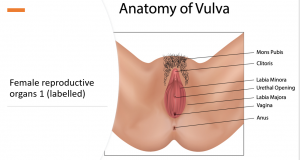
Update 22 October 2020:
We have been sent the following response that a parent received upon asking these questions of John Swinney.
(as a pdf)
